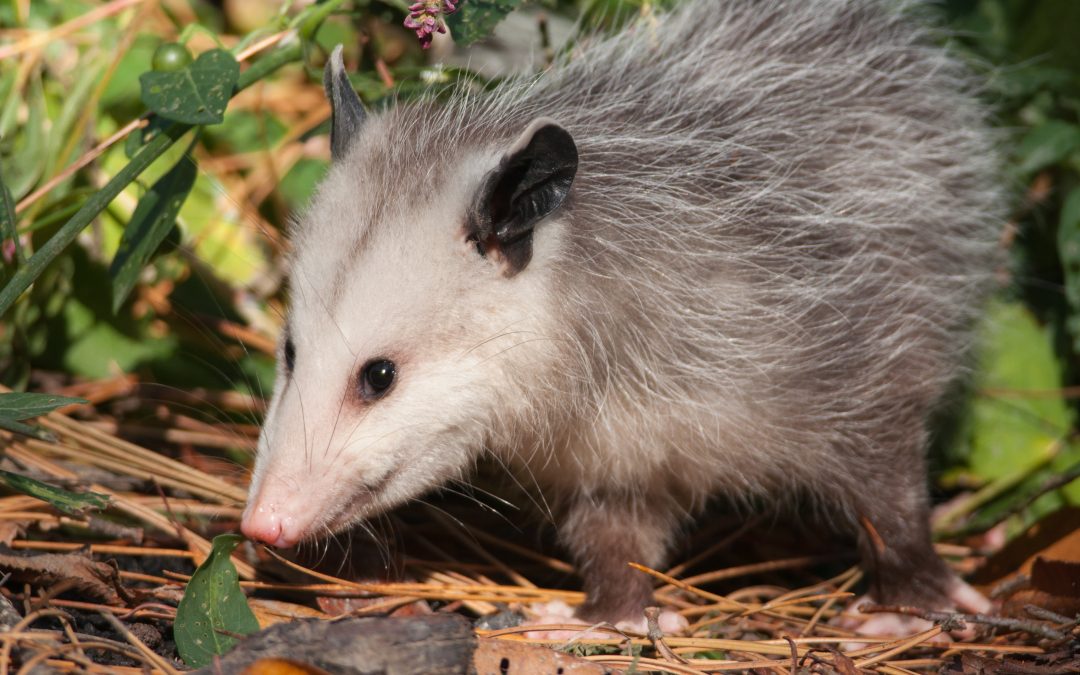Possums are surprisingly beneficial animals to have around. They clear away garbage, eat pesky insects, and some people think they’re rather cute. However, that doesn’t include everyone, and many believe that these wild animals should stay wild. Having an opossum around the home isn’t a pleasant thought for every homeowner, and in this guide, readers will learn How to get rid of opossums in and around the home.
Identification
The first and most important step in possum control is identification. Although it’s known as the Virginia opossum, the animal is found in areas across the country. It’s America’s only marsupial, and it’s found throughout the midwestern and eastern US. It’s not normally found in the mountains, in the desert, or the high northern part of the country. Before deciding how to eliminate the problem, verify that a possum is the cause.
An adult opossum may range from 22 to 33 inches long, including a 10-12 inch tail. The animals weigh between four and 12 pounds, and males are typically bigger than females. Possums have coarse, long gray outer fur with a deep brown or black undercoat. They have five toes on each foot, and on the hind feet, the first toe is opposable and has no claw. Opossums have hairless, black, large ears, small and beady black eyes, and white, furry faces. Snouts are pointed and long, and their noses are pink and rather distinctive.
Diseases Spread by Opossums
A homeowner’s primary reason for learning How to keep opossums away may be due to concerns about disease. Many assume that possums carry rabies, but that’s not true. While the animals do carry some diseases, they seem to have a natural immunity to rabies. According to the Wildlife Rescue League, possums do not carry diseases typically found in cats and dogs, such as parvo, distemper, or feline hepatitis. Although any mammal may catch rabies, it’s quite rare in opossums; it’s thought to be due to a body temperature that’s too low to allow the rabies virus to multiply. Opossums do carry some other diseases that may be concerning to homeowners, children, and pets, such as:
- Leptospirosis
- Relapsing fever
- Tuberculosis
- Spotted fever
- Tularemia
- Coccidiosis
- Toxoplasmosis
- Trichomoniasis
- Chagas disease
Possums may also carry lice, mites, ticks, and fleas. They are hosts for dog and cat fleas, particularly in suburban and city environments.
How Possums Benefit the Ecosystem
It’s crucial to get rid of opossums that cause trouble in and around the home, but not all of the animals are bad. According to information from the Wildlife Rescue League, possums are very adept at insect or rodent control, and because they eat carrion (dead meat), they keep neighborhoods and city streets clean. The League goes on to state that possums are more helpful as scavengers than harmful for the damage they can potentially cause. Neighborhoods with opossums are often much cleaner than those without them.
Getting a Handle on Opossums
Opossum removal is often a very challenging task. The best way to control the local possum population is to prevent the animals from making their homes nearby. The experts recommend the following measures:
- Do not leave trash containers or pet food outdoors during the night, as it provides possums with a free source of food.
- Pick garden fruits and vegetables when they’re ripe to discourage possums from feeding on them and avoid leaving rotten crops in the garden.
- Eliminate dilapidated buildings, brush piles, and holes underneath concrete slabs, as they’re natural hiding places for possums. The animals use other creatures’ abandoned burrows rather than digging their own holes, and if these burrows are found, they should be filled in right away.
- Close pet doors during the night, as possums are known to get into the home in this manner. Once a possum is in the home, it can typically be gently coaxed outside at the end of a broom. Opossums rarely stay in one place for more than a night or two, and fears of them ‘taking over’ the home are essentially unfounded. Occasionally, a mother possum with babies may stay longer, but she and her brood will usually leave shortly thereafter.
When Possums Become a Problem
Possums aren’t scared of traps and can easily be caught with cage- or box-type, live catch traps. These traps should be, at the least, 32x12x10 inches in size, and they’re best placed along known travel routes. Canned tuna or fish-flavored cat food makes a great trap bait, but it may attract neighborhood cats as well. To prevent this, use whole raw eggs, or peanut butter on bread. Other good baits include overripe melons, bananas, and grapes. Live traps are useful, but there’s still the issue of dealing with the possum once it’s been captured. It is illegal to relocate opossums without the proper permits, and those who don’t want to deal with the issue should consider hiring a professional wildlife trapper.
Call for Help Today
If a possum is presenting a problem in and around the home, a pest management expert may be able to offer assistance. When the new neighbors have long, furry snouts and rat-like tails, it’s time to call in the experts. A local wildlife trapper can help a homeowner develop a specialized possum control plan that keeps the animals away from the home.



Can you recommend a wildlife trapper in the Toledo area. I have possums that have been living in my attic, I called pest control but it doesn’t seem like they have much knowledge of trapping the animals when they sealed off the area they set a trap and it didn’t work, they came back and never entered the cage and they put food in it. I paid to have them catch the animals and I feel like I have not received the service that they provide. Being on a fixed income I can’t afford to give money away. Please advise!! Thank you
Do you find opossum in Canada
I have a problem with squirrels invading my property , I purchased a small cage and caught a possum should I contact animal control to remove it?
Please advise?
jojosmomma14@yahoo.com
Yes, I have possum in my backyard. They are big every concern about at eight because I have a Small dog. Please help.
Are possums and squirrels known to attack people who are out walking?